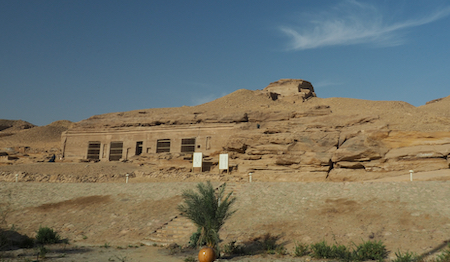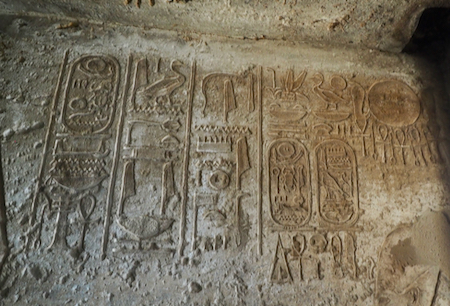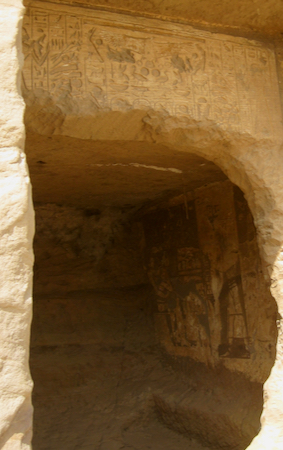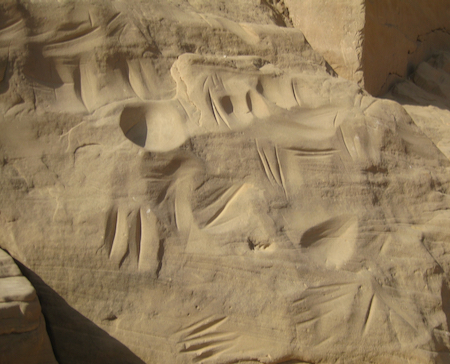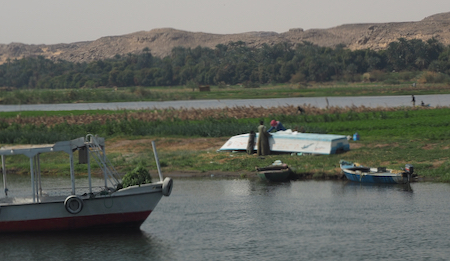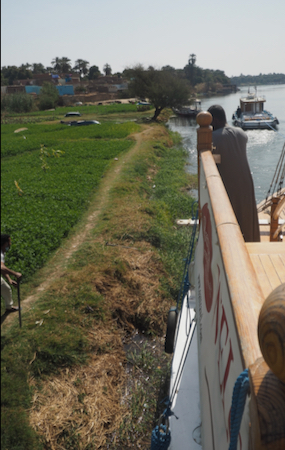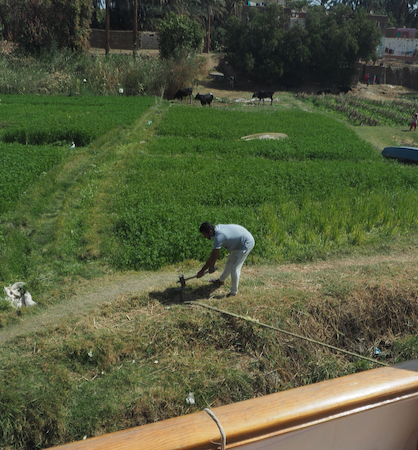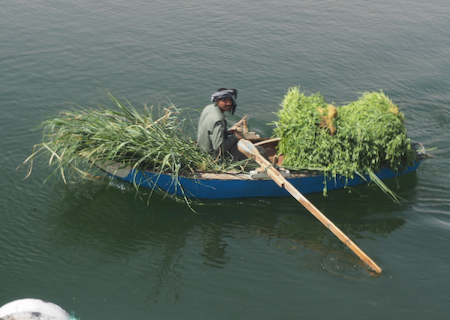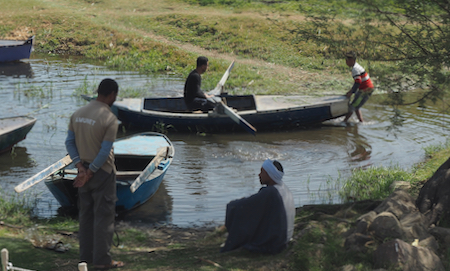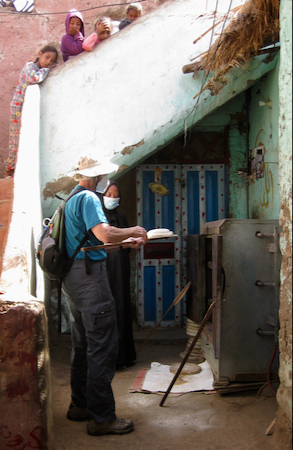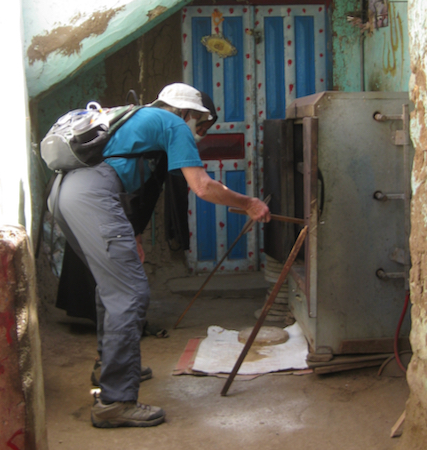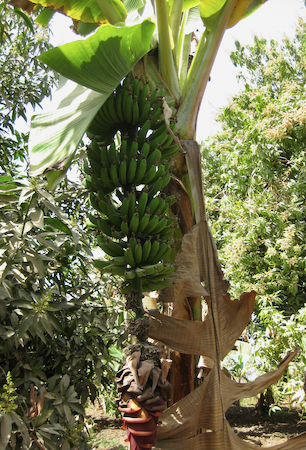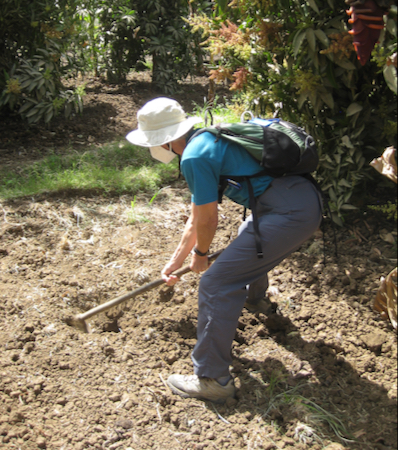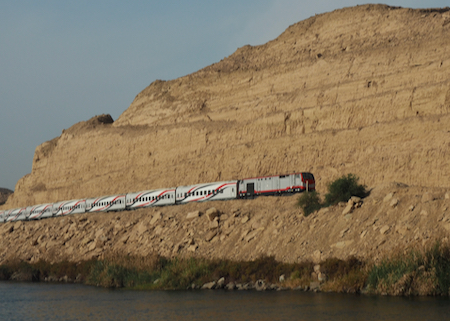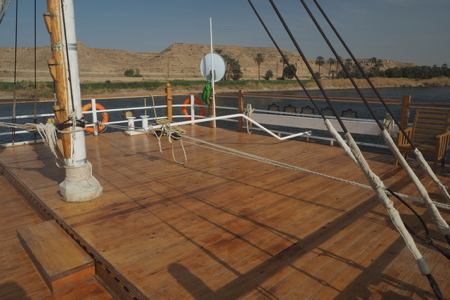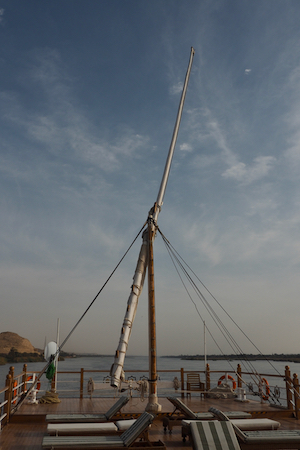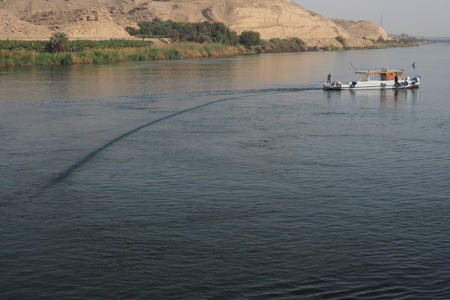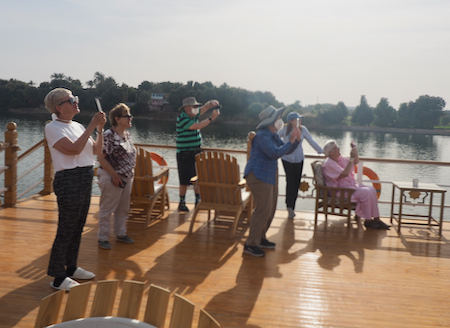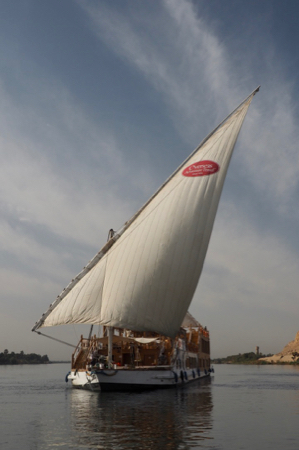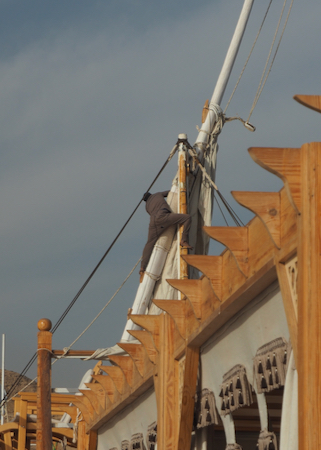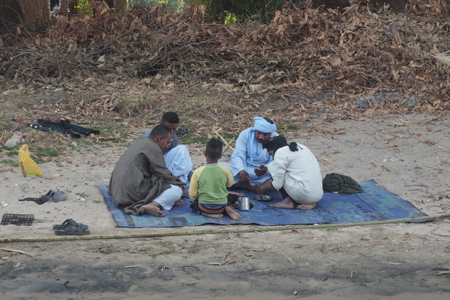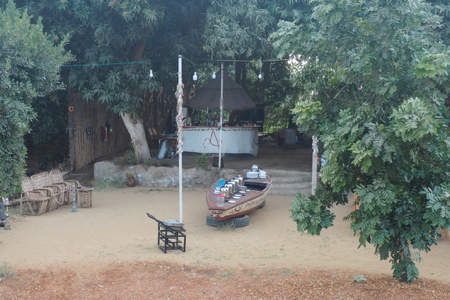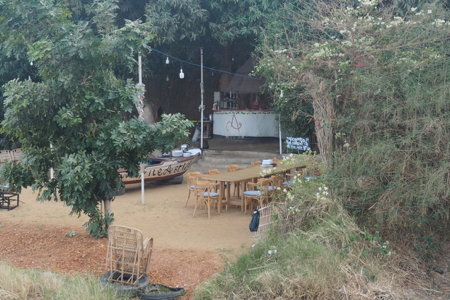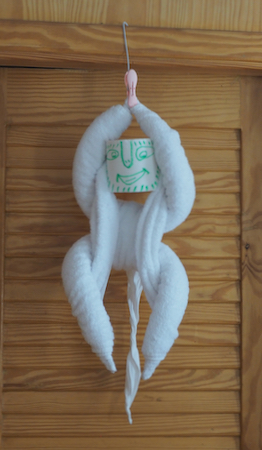Sat., 3/5/22 - Gebel Silsila, Bewaw Island
We docked overnight at one of the narrowest parts of the river. It is an area with a 1300 BCE (18th Dynasty) rock-cut temple, Gebel Silsila, and several shrines along the river. Seven kings used the small temple that is dedicated to Sobek, the crocodile god.
Gebel Silsila Temple
Doorway surrounded by cartouches and hieroglyphs
Cartouches
After exploring the temple the group walked on to a sandstone quarry. Around 1500 BCE construction of temples switched from using limestone blocks to sandstone ones. The quarries were all controlled by the royals. It is estimated that 8,000 people (men) worked at this site. Holes were drilled into the sandstone, dry wood was placed in the hole, and then watered. The wood expanded and the stone would split. A ramp led down to the river and ropes were used to control the block of stone. The stone was loaded onto a barge to travel to a construction site. We could see where chisels and knives were sharpened in a large stone.
Sandstone from the Gebel Silsila quarry was transported to Luxor to use in building the Temple of Karnak.
Sandstone quarry
Tool sharpening stone
After the Gebel Silsila exploration, the Amunet sailed down the river to Bewaw Island for our OAT “Day in the Life.”
Boat repair
Getting really close to shore
Tying up the Amunet
Note that the "oars" are just 2x4s
More 2x4 oars
The group walked through the village and watched a woman bake bread. We had to “help” her put it in the oven. Then we walked among cows and sheep into a banana, mango, and date tree field. It actually was quite the same agricultural practice as our pecan trees get. The field is flooded by irrigation from the Nile and there are berms to pool the water for a group of trees. We learned about the banana trees and Gale volunteered to use a mattock to dig the hole for a seedling banana tree.
The group all entered the farmer’s house and sat in a room with about 12 of his family, half of them unmasked children. We drank hibiscus tea, ate a chicken and rice meal, and finally walked back to our boat through alfalfa, spinach, leek, and garlic fields on the river bank.
Making bread
Making bread
Mother and children
Schoolwork
Water pump
Bananas
Gale digging a hole to plant a banana tree
Back on board we sailed to a wide part of the river and the tug boat turned us around (heading south, upstream) and the two sails were put up. Everyone got onto the tug and motored around our dahabeya for a photo op of the Amunet under sail. In the old days these river boats floated with the current going north and used sails and the prevailing wind from the north when going south. Our dahabeya has no motor and is attached to a motorized tug boat which pulls us along. We have an interesting rudder system attached by pulleys and ropes on the top sun deck. A crew member can help steer when necessary.
Riverboat passing on the Nile
Passenger train
Amunet's rudder fixed in place
Using the rudder
Amunet's mast
Access to the mast and sails
Putting up the sails (better he than I)
Putting up the sails
Our tugboat casting off our tow line
Quite an engaging process
Putting up the sails
Amunet under sail
Another train
Front sail
Interesting train
Down come the sails
Back on board, the sails came down - a coordinated effort by the crew - and we were reattached by a long rope to our tug. We got a “tour” of our small galley with a four burner gas stove, a warmer oven, fridge, storage, etc. All was very compact and efficient for two chefs to provide nice meals.
Amunet's kitchen (galley)
Meal-time for this group
Kids playing in the water
All set up for our Bar-B-Q. It was not buggy and the crew had everything set out for a comfortable buffet. It was quite nice to be outside and on land.
All set up for our Bar-B-Q
Nice reflection
Courtesy of our talented cabin steward
| Return to Top | Return to Itinerary | Return to Trips page to view other trips | Return to Dreamcatcher Home Page |
